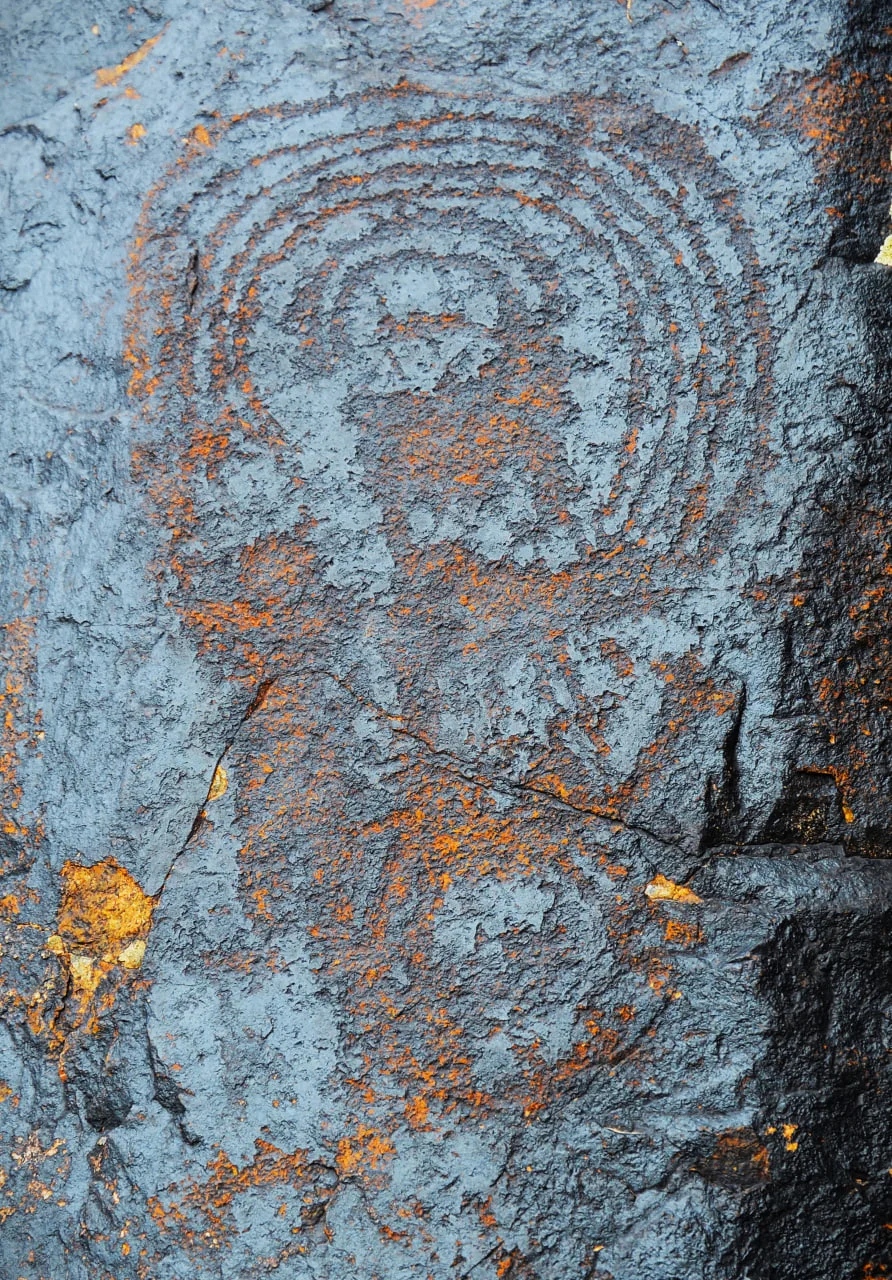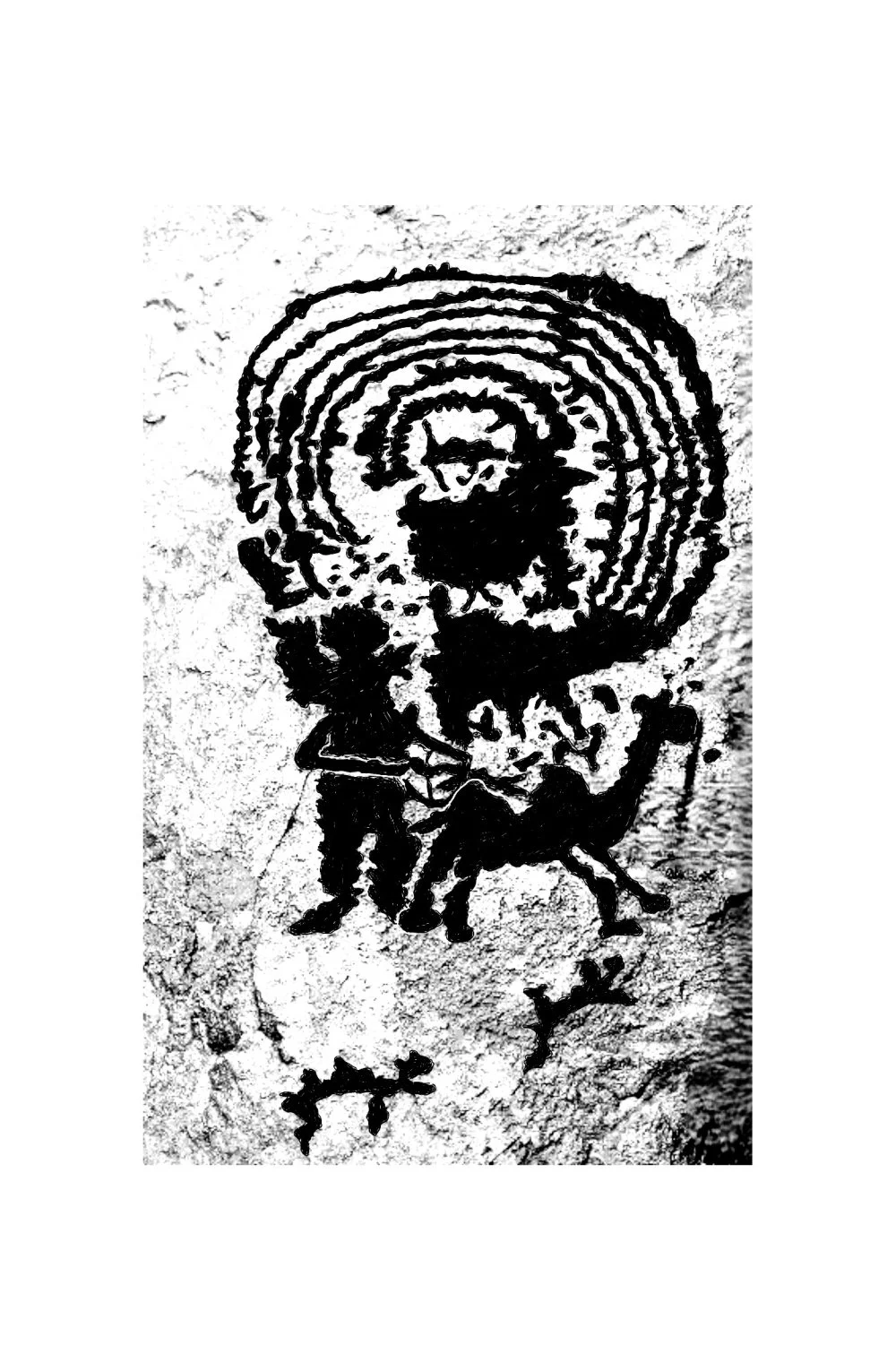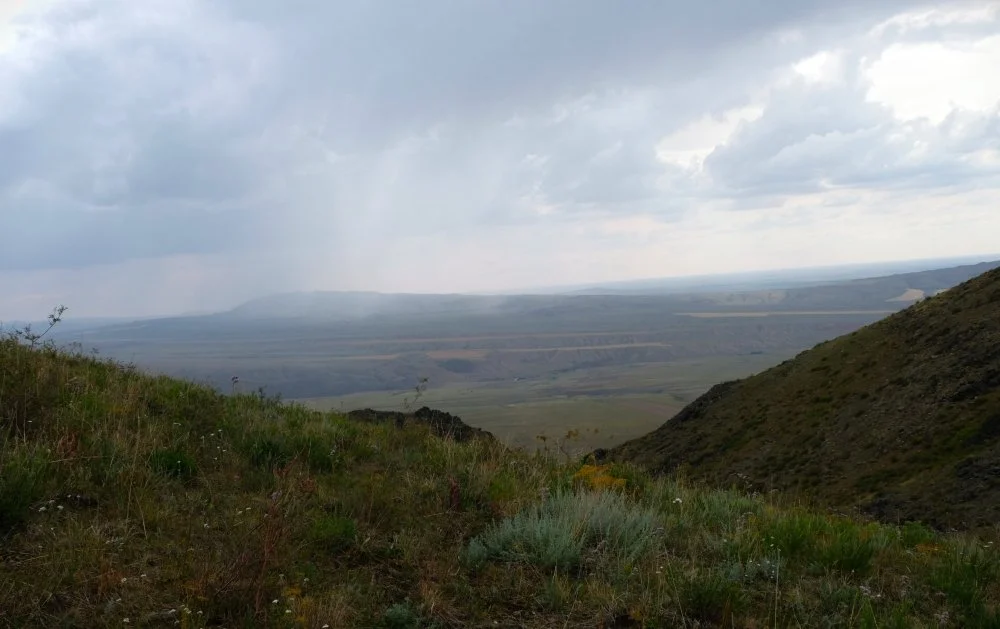How do you paint a rainbow with only a chaser and a stone for a canvas? Well, nothing was impossible for the shaman-artists of the Bronze Age!
Today, we will talk about an extremely rare subject—a scene with a five-horned goat. This petroglyph was found in the Alabasy Mountains in Jetisu as part of a large group of images by volunteer researchers and participants of an archeological exploration led by Dr Alexei N. Maryashev from the Margulan Institute of Archeology.

Petroglyph of a rainbow goat. Photo/Olga Gumirova
The ridge in the foothills of the Dzungarian Alatau has special natural and climatic conditions. It seems to attract clouds, and so it rains more often here than in neighboring mountain ranges, leading to a greater likelihood of seeing rainbows.
However, rainbows and goats hardly seem to be compatible concepts, especially since the animal in question has only five horns, not seven. But things are far from that simple.

Petroglyph of a rainbow goat. Drawing/Olga Gumirova
The goat was often a sacred animal for the peoples of the Bronze Age. Suffice to recall that the Greeks imagined that Zeus was fed by the goat Amalthea (and her horn became a symbol of abundance, the cornucopia). Among the ancient Hebrews, a goat driven from the camp took all the sins of the family and tribe with it (hence the term ‘scapegoat’), and among the Germans and Slavs, the goat was a symbol of fertility. Among the inhabitants of our steppes, the goat was a heavenly symbol. There is no doubt that people in the Bronze Age worshiped the image of the goat as a representative of the higher world.

Rain in Alabasy/Olga Gumirova
The idea that the rainbow has seven colors appeared relatively recently, in the eighteenth to nineteenth centuries. Previously, it was believed, and confirmed by written sources, that the rainbow had only five colors (and some ethnic groups count only three), and thus, the horns of the goat may well represent the number of colors of the rainbow.
Of course, there are stories about the rainbow in the mythology of almost every culture on earth. Some of them, for example the Karen people of Myanmar, consider this natural phenomenon to be very dangerous. And the interpretations vary widely. For the Iranian-speaking peoples, it is a bow; for the Scandinavians, the bridge connecting the earth with the home of the gods; for the Australian aborigines, the rainbow snake; and for the Chinese, the two-headed dragon. But it is the myths of the Khakas and Selkup peoples that are interesting to us. According to them, the rainbow is a heavenly gate or road, not an easy one but one that can be used only by a high-status shaman to make a difficult and dangerous journey to the sky.
If you look closely at the petroglyph, behind the goat, where its horns end, you will find an anthropomorphic figure. It is remarkable for its height and solidity, which emphasizes its special status. Below the goat and the man, the ancient shaman-artist has depicted a caravan of camels (a symbol of the road) going straight to the sky.
Interestingly, Khakas and Selkup shamans still depict the rainbow on their tambourines—without the goat, though!




